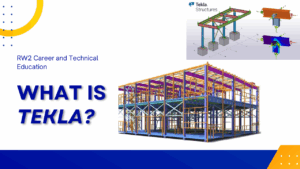As the planet continues to warm and extreme weather events grow more frequent and intense, the way we design buildings must evolve.
Hurricanes, heat waves, flooding, wildfires, and snowstorms aren’t just rare occurrences—they’re becoming the new normal.
For those who are exploring a new career path or looking to upgrade their skills, mastering building design tools like Revit can be a powerful step toward entering an industry that needs forward-thinking designers and problem-solvers.
Whether you’re considering a career shift into architecture, drafting, or construction technology, or you’re already in the industry and looking to specialize in sustainable and resilient design, learning how to use Revit can give you a strong edge.
Let’s explore how Revit helps us design smarter, more climate-resilient buildings—and how you can use these skills to make a real difference.
Why Climate Resilience in Building Design Matters
Climate resilience refers to the ability of buildings and infrastructure to anticipate, prepare for, and respond to hazardous events, trends, or disturbances related to climate.
From rising sea levels to powerful storm systems, buildings need to be more than just functional—they must also be able to endure.
Traditional construction methods often fall short in today’s world. Buildings that aren’t designed with resilience in mind can suffer severe damage, resulting in high costs, displacement, and environmental impact.
This is where modern software like Autodesk Revit becomes essential.
Revit, a Building Information Modeling (BIM) software, allows users to create highly detailed and data-rich digital models of buildings. These models can be tested and optimized to account for real-world environmental factors, offering an innovative approach to weather-resistant design.
Using Revit to Build for Flooding and Water Damage
Floods are one of the most common and destructive natural disasters. Designing structures to prevent and resist water damage is crucial, especially in flood-prone areas.
Revit’s Site Modeling Tools allow students and professionals to:
- Model the surrounding topography to identify potential water flow paths.
- Simulate how water might accumulate or drain from a property.
- Design elevated foundations or floodwalls by incorporating elevation data.
With integrated tools like Revit’s Toposurface and Grading tools, users can visualize how a site responds to heavy rainfall.
These insights inform critical design decisions, such as choosing higher ground for placement, angling surfaces for runoff, or using permeable materials.
By integrating these strategies early in the design process, students can ensure that their projects are more likely to withstand floods—protecting both property and lives.
Designing for Hot Climates and Energy Efficiency
As heatwaves become more intense and more common, designing buildings that stay cool without over-relying on energy-intensive cooling systems is key.
Revit’s Energy Analysis Tools allow learners to assess and improve a building’s energy performance before it’s even built. Here’s how:
- Analyze Solar Exposure: Revit lets you simulate how much sunlight a building receives throughout the year. You can use this information to position windows and shading devices strategically, reducing heat gain.
- Optimize Building Orientation: You can rotate or reposition the building model to see how its orientation affects energy usage.
- Test Insulation and Materials: By selecting different materials for walls, roofs, and windows, you can see how they impact the building’s internal temperature.
This functionality empowers designers to create energy-efficient buildings that naturally stay cooler in hot climates—reducing the need for air conditioning, cutting energy costs, and lowering environmental impact.
Building for Storms, Snow, and High Winds
High winds, snowstorms, and hurricanes pose major threats to building integrity. Roofs can collapse, walls can give way, and windows can shatter if not designed properly.
Revit’s modeling tools can help students design for these forces by allowing them to:
- Model wind-resistant roof shapes, such as hipped roofs instead of flat or gable roofs.
- Add reinforced structural elements and materials suitable for high-wind zones.
- Consider load-bearing capacities for heavy snow and wind pressure.
- Coordinate with structural engineering models for enhanced precision.
With Revit’s interoperability with tools like Autodesk Robot Structural Analysis and Insight, designers can simulate structural performance under different weather conditions—ensuring that their buildings aren’t just stylish but also secure and stable.
Real-Life Applications: From Theory to Practice
One of Revit’s most powerful advantages is how it allows users to bridge the gap between imagination and implementation.
What individuals love most is how hands-on Revit is—everything you design can be tested, simulated, and improved before you ever pour concrete or raise steel beams.
In extreme climates—such as coastal zones, desert cities, or snowy mountains—designers using Revit can:
- Incorporate ventilation strategies for passive cooling.
- Design solar-shaded façades for hot environments.
- Include rainwater harvesting systems or green roofs.
- Model the impact of snow load or high winds in mountain regions.
This makes Revit not just a drafting tool but a decision-making platform that helps future professionals create buildings that are safer, stronger, and more sustainable.
Why People Learners Choose RW2 to Learn Revit and More
If you’re exploring a new career in design, architecture, or construction—and you’re serious about creating real-world impact—RW2 is your gateway.
RW2 offers comprehensive training programs in:
Whether you’re starting from scratch or upskilling from a related field, RW2’s flexible, industry-focused programs are designed to meet the needs of learners.
Programs can be completed online, making it easier to learn while working or managing family responsibilities.
Missouri Residents: Learn with Less Financial Burden
For those living in Missouri, there’s great news: RW2 participates in the Fast Track Workforce Incentive Grant Program. This grant supports adults across the state who want to return to school and train for high-demand careers—including those in design and cybersecurity.
RW2 is also proudly:
- Re-certified by the Missouri Department of Higher Education and Workforce Development
- Recognized as one of Missouri’s Eligible Training Provider
- A member of the State of Missouri Adult Learner Network
This means you’re not just learning valuable skills—you’re getting them from a trusted, accredited training provider with strong state support.
How You Can Make a Difference with Revit
Learning Revit is more than a technical skill—it’s a way to contribute to a safer, more resilient future.
As climate change accelerates, communities will increasingly rely on architects, designers, and construction professionals who understand how to build for resilience.
And with Revit, you can visualize, test, and improve your designs long before construction begins. This proactive approach means fewer surprises, fewer failures, and a greater chance of success in the face of unpredictable weather.
For learners, especially those making a career change, mastering Revit opens the door to fulfilling roles in design firms, construction companies, government planning agencies, and more. It’s a skill set that’s both future-proof and meaningful.
If you’re interested in enrolling in the Computer-Aided Drafting and Design (CADD) and Revit for Building Information Modeling (BIM) program, click below—exciting news is on the way, and you won’t want to miss it!
Ready to Start Your Career in Resilient Building Design?
Whether you’re aiming to start a new career or enhance your current one, RW2 Career and Technical Education can help you take the first step. Our Revit training is built for those who want flexible learning, expert instruction, and practical outcomes.
Contact RW2 at rw2.cte@rw2.education to explore our Revit and CADD programs. Missouri residents: Don’t forget to check if you’re eligible for the Fast Track Workforce Incentive Grant—you could train with little to no cost.
It’s never too late to learn new skills—and with Revit, you’re not just learning how to design buildings. You’re learning how to build a better, more resilient world.



